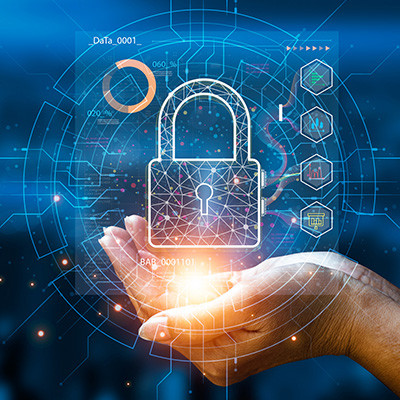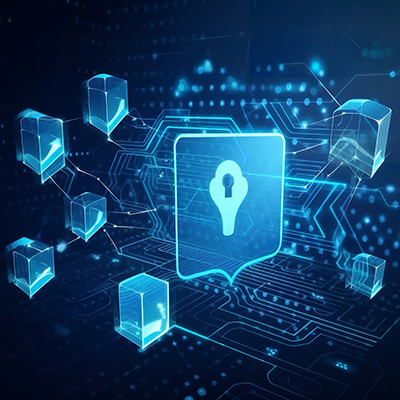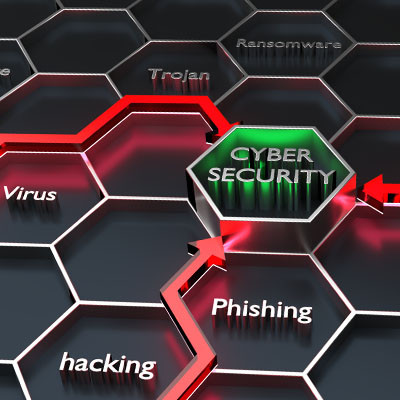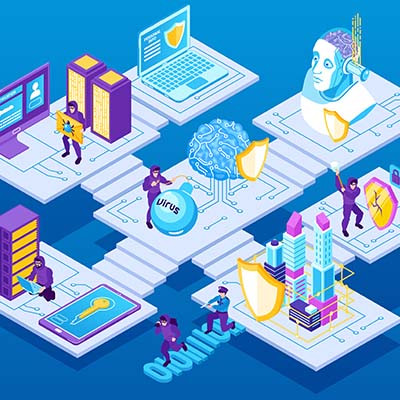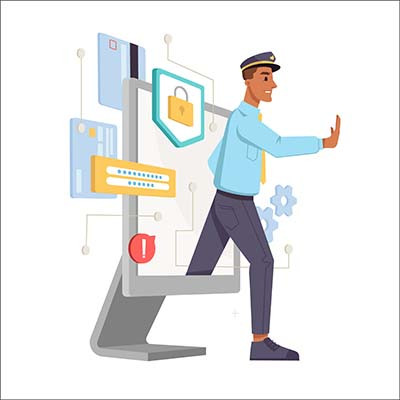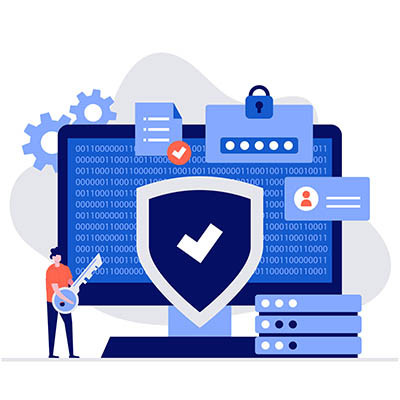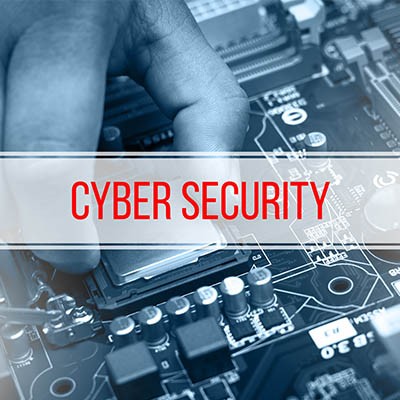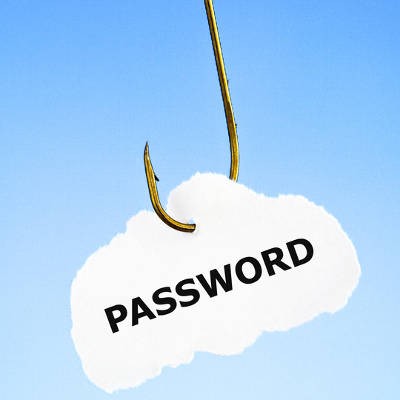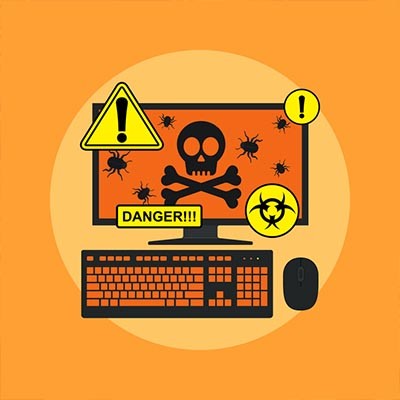Small and medium-sized businesses largely rely on their standing amongst their audience, which means their reputations are critically important to preserve. Unsurprisingly, one of the fastest ways to damage—if not eliminate—their reputation amongst the public is to suffer a cybersecurity event. Let’s examine some statistics, and consider what you need to do to keep your business from becoming one.
k_Street Consulting, LLC Blog
Technology and digital tools are a hot topic on our blog, but where there is technology, there is also data… and where there is data, there will be hackers trying to steal it. Data breaches are a common thread in all industries, and to prove this, we have put together six of the most notable data breaches from 2023. We hope you can learn a thing or two from them!
Phishing attacks present a significant problem for the sustained stability of organizations. That is because they are a pervasive threat and come in several different forms. This month, we will outline some of the ways that phishing can affect an organization and a couple of things that you can do to keep them from being a problem.
Cybersecurity has become a paramount concern for individuals and organizations alike. With the constant threat of cyberattacks and data breaches, it is crucial to have robust security measures in place. This is where cybersecurity consulting comes into play. Below, we will explore the various ways in which consulting services contribute to enhancing cybersecurity.
For today’s business, there are very few threats that are as pervasive as cyberthreats. For this reason organizations that are willing to invest in their cybersecurity seem to have more control over their data and operations. With cyberthreats constantly evolving and becoming more sophisticated, it is crucial to equip ourselves with the right tools to protect our digital assets. In this week’s blog post, we will explore some of the most important cybersecurity tools that every individual and organization should consider implementing.
Does your business rely on the strength of its information systems? If so, you understand just how important cybersecurity is to the health of your organization. In a near-constant attempt to maintain organizational cybersecurity, many organizations have started changing the way that they approach data and network security, by moving their security efforts to the edge of their network. This is called edge security, and there are some very intriguing benefits.
Phishing is the most widespread attack vector for modern day hackers. They are continuously evolving, getting more and more sophisticated, and therefore more dangerous. In this month’s newsletter, we are going to go through what makes a phishing attack and how to give your organization the best chance at keeping them from being a major problem for your business.
Every organization that uses technology has policies and procedures that dictate the way that the people that work there have to deal with the technology that they give them. When you hire new employees, you need to be able to get them to understand that they have a significant role to play in the way that the business operates. Let’s go through some of the considerations you need to explain to your new employees so they can better understand how to interact with business technology.
Cybersecurity is quickly becoming one of the leading risks that businesses of all shapes and sizes face. Cyberattacks are expensive, they risk your continuity, and they could even get you in hot water when it comes to compliance regulations, local and state regulations, and virtually any entity you are associated with.
It might feel like this is an insurance company’s way to nickel and dime business owners, as premiums will continue to rise, especially for businesses that aren’t meeting certain requirements, but the truth is, with so much risk, the entire world needs to adjust for cybersecurity.
Do you know those horror stories you catch every so often where a huge business has their network hacked and millions of their customers and employees have their personal and financial information leaked onto the Dark Web? Your organization isn't likely as big as theirs, but regardless of how much money, people, and diverse revenue streams an organization has, having its network breached and its customers’, or its employees’, information strewn about over the Dark Web is not an ideal scenario.
Cyberattacks have caused many millions of dollars worth of damage to businesses over the past several years, so it makes sense that your business should invest in its cybersecurity to mitigate these damages. That said, there is only so much you can invest into your cybersecurity budget, as you have to factor in other parts of your business, too. Today, we want to share with you three ways you can invest in cybersecurity initiatives that won’t completely break your bank.
How many devices or points of access do you have for your business’ data infrastructure? Chances are it’s more than you think, at least at first glance. If you count up all the mobile devices, server units, workstations, laptops, and so on that have access to your network, you might suddenly realize how important it is to secure all of these endpoints, as any unsecured device could be a path forward for hackers.
We live in a world that is constantly connected, be it through a wireless connection or through your smartphone’s mobile data. This makes it especially important to practice appropriate cybersecurity practices while you’re connected to a wireless network. Let’s go over some wireless cybersecurity best practices you can keep in mind when using your wireless technology.
With many people choosing to work remotely, and businesses more or less embracing the idea of employing mobile teams, the tools and strategies needed to keep your business’ data and infrastructure safe could be new to your business, but for the most part many of them are actions that any organization looking to secure their IT would take. Let’s take a look at some of the strategies used to secure remote endpoints.
With Google Chrome being one of the most popular web browsers out there, it’s no surprise that threats want to target it and take advantage of its users. However, up until recently, there have not been very many zero-day threats associated with Chrome. Zero-day threats are attacks that have never been seen before, affecting a new and previously unknown vulnerability. We want to remind you that it’s not always a bad thing when vulnerabilities are discovered in a browser or web application—in fact, it can actually be indicative of good monitoring practices.
Cybersecurity is incredibly important for any organization that requires IT to remain operational (basically all of them), so it’s time to start thinking about your own strategies and how you can keep threats out of your network. One viable solution your business can implement is a Security Operations Center (SOC). What is a SOC, and how can you use it to keep threats off your network?
It can be tough to get your staff to care about your business’ network security, especially if they don’t consider it part of their day-to-day tasks or responsibilities. However, network security is not just isolated to your IT department; it matters to everyone, and if you can convince your staff to adhere to best practices, your security will be that much more effective moving forward. Here are seven tips you can use to get your staff to care about network security.
There are a lot of threats out on the Internet, and many of them have absolutely a slim chance to threaten your business. Unfortunately, there are plenty that can and it only takes one to set your business back. Many IT professionals currently working for enterprise businesses deal with threats day-in and day-out, so they are experienced and knowledgeable. Small business owners, who for all intents and purposes are the lead IT decision-makers, don’t always consider these risks; they just need to keep their business running effectively.
You see the headlines every single day while browsing the Internet: “So-and-So Suffers Massive Data Breach” or “Huge Data Breach Leaves Thousands of Credentials Exposed to Hackers.” Maybe you don’t see these specific headlines, but you get the idea; cybersecurity is a big deal these days, and you need to take it seriously before your business encounters problems that it cannot recover from.
Artificial intelligence, or AI, is a technology that many industries have found themselves benefiting greatly from, especially in the domains of cybersecurity and automation. Unfortunately, for every one great use of something, hackers will find two bad uses for it. AI has dramatically changed the landscape of cybersecurity and, more interestingly, cybercrime. Let’s take a look at why these threats are so concerning.
Businesses need all of the advantages they can get against threats, especially considering the fact that many of them adapt and evolve in response to advances in security measures. Some security researchers are seeing great success with artificial intelligence measures, a concept that could eventually become the future of network security in the business world.
Today’s cybersecurity landscape is dangerous, to say the least, prompting many organizations to adopt what is called a zero-trust policy for their security standards. Is a zero-trust policy the best solution for your company’s cybersecurity woes, and how effective is it toward preventing security issues? Let’s take a look.
Technology is often a source of struggle for small businesses, usually for one of two reasons. Either the strong IT leadership needed isn’t there, or there aren’t enough resources to support the level of IT management and maintenance that businesses need. Of course, there are other mistakes that can easily be made when it comes to a business’ technology management.
Data breaches are a well-known fact in the business environment, and small businesses in particular have many challenges that threaten their operations. It is important that you consider these security issues when putting together your risk management strategy, especially as it pertains to cybersecurity. Let’s take a look at how you can overcome some of the security challenges present for small businesses in 2021.
If anything has been made clear by recent strings of high-profile ransomware attacks, it is that businesses and organizations simply do not take security as seriously as they need to. We urge you to use this opportunity to reconsider your own levels of network security. Are you doing all that you can to keep your data and assets secure? There are countless threats out there, and they all must be addressed (or at least prepared for) in some way.
Cybersecurity is an important part of running a business, especially in today’s age of ransomware and other high-profile hacks. It stands to reason that you periodically assess how effective your security practices are and how well-prepared your team is to respond to threats, but how often should you do so? Let’s take a closer look.
Many small business owners will temper their investments into IT security because they are of the notion that because their businesses are so small, they can’t be affected by hackers. We get it: prioritizing IT security is more expensive than you like and that money can justifiably be used elsewhere for more gain. The problem is that small businesses can and do get targeted by hackers. In fact, over 25 percent of all data breaches happen to small businesses. In today’s cyberthreat climate, your business can’t rely on luck. Let’s take a look at what you can invest in to protect your network and infrastructure.
When a company operates primarily via the Internet, there seems to be an inherent trust that their audience naturally has. There’s little-to-no doubt that all promises will be kept and that all data shared with them will be fully secured, but is this confidence appropriately placed? While we can’t speak to the promises these companies make, we can weigh in on some common data security practices.
Each and every business should be prioritizing their cybersecurity, as hacking is as popular and ever and some of the worst malware in history is currently spreading. To really drive this point home, we’ve put together some telling cybercrime statistics that clearly demonstrate the damage that cybercrime can wreak.
Cybersecurity needs to be one of any business’ primary considerations. More than it ever has been before, cybersecurity is one of the biggest day-to-day issues that a business needs to deal with; and, this need is only exacerbated by the shortage of cybersecurity talent and loyalty to outdated security strategies have put many businesses in an unenviable, and vulnerable, position.
Most of us like to take matters into our own hands, almost to a point where we might refer to ourselves as control freaks. So, when it comes to letting other people or even our own devices update themselves, we tend to click “remind me later” or “don’t ask me again”. Patches however, are a crucial task in the computing era. Keeping everything up-to-date aids your business in staying one step ahead of lurking threats. Recently, Microsoft announced that it had two major security updates which required emergency patches.
If you are concerned about your business’ ability to keep its network secure and data protected, you're not alone. More businesses than ever are utilizing modern strategies to ensure that their networks are safe, their hardware is stable, and that their data stays secure. With the continual shifts we are seeing in the threat landscape it is essential that cybersecurity continues to evolve. Today, we take a look at some of the innovations being made in cybersecurity, and what to expect out of future cybersecurity tools.
Most people know what a URL is. It’s the address of a website, typically starting with http:// or https://, and it is essentially the location of a web page or application that can be accessed through a web browser or application. Nowadays, URLs are being manipulated by actors for both positive and negative means. Let’s take a look at URL manipulation and how it could affect you.
Many companies today are increasing their adoption of remote working strategies, enjoying the operational benefits that come along with them. In order for you to take advantage of these benefits in your own operations, you need to be sure you have the tools needed to optimize remote work. Here, we’ll review what you need to make the most of your remote worker strategy.
There are many threats out there in the online world that want to see your business suffer, and they will go to any lengths to make it happen. Now, we all have seen the various emails that these hackers and scammers might send to unsuspecting users, but these are only the beginning. The real threat comes from specialized phishing attempts, and they come in many different forms. We’ll help you identify them.
Cybersecurity is one of those hot-button issues that you should understand well enough to protect your business and yourself. Basically, as your organization holds more sensitive information, you’ll need to be more vigilant about how you approach cybersecurity. Today, we’ll take a look at the design and practices of organizational cybersecurity, and how you can work to bridge the gap between the solutions you can’t afford and the ones you already use.
Bar none, cybersecurity has to be a major consideration for every business owner or manager in business today. The prevalence of people looking to rip your company off has never been higher; and that is the truth for nearly every company that uses the Internet for anything. Today, we take a look at some of the most serious cybersecurity threats that everyone should be cognizant of right now.
2017 wasn’t so long ago, but one year is a long time in terms of cybersecurity developments. Anytime the Internet is involved, it’s important to remember that threats have access to the collective minds of every hacker on the planet, meaning that developments can happen rapidly and without much warning. We’ll take a look at how cybersecurity has changed since 2017, including some notable information about how organizations are protecting themselves today.
Today’s headlines are peppered with stories of major companies and institutions falling victim to a cyberattack. As a business owner, what’s your response to these gut-wrenching stories? If you write them off as fear mongering and believe that these attacks can never happen to your SMB, well, you’re wrong. They can and it’s up to you to prevent such a disaster.
In 2016 former President of the United States Barack Obama passed the Cybersecurity National Action Plan that implemented near-term action and developed a longer-term strategy of bringing awareness and protections to public computing systems connected to the Internet. The strategy is to make an immediate effort to empower citizens to protect their own privacy, while also maintaining public safety and national and economic security, as many of the most critical systems this nation utilizes are networked on the web.
In the wake of the Equifax data breach, which placed the personal information of 143 million users at risk, the issue of data security is at the forefront of social consciousness. Your organization needs to go about its daily business as if it will experience a data breach at any given moment. This involves looking at the worst-case scenario, and planning for it so that you’re never caught unaware.
Regardless of your feelings on the matter, the 2016 United States presidential election was an extremely divisive one--in no small part, due to the suspicion that the outcome of the election may have been significantly influenced by hacked voting machines. This uncertainty has led to some states making strides to ensure that their technology will no longer be responsible for such doubts.
Security is always changing due to the volatility of online threats and vulnerabilities. Things have changed so much over the past decade that solutions that worked back then are so outdated that they put your business at risk today. This brings into question what you should expect in the years to come. What are some of the threats that your business can expect to face in the future?
A lot has been made of the blockchain recently. Not just because it is the technology used to fuel the thousands of cryptocurrencies there are now, but because the distributed nature of the technology has become the model for many new technological strategies. There are plans to use blockchain technology to do a great many things, but one element where blockchain can help immediately is for cybersecurity. Today we’ll take a look at the blockchain and why it may be the key to the future of network and cybersecurity.
How does your business handle threats to its data security? You might think you’re safe, but according to the Ponemon Institute, nearly four out of every five organizations aren’t prepared to fend off threats to their security. This is a major problem, so it should make you question whether you’re prepared to handle the various security risks that could potentially plague your business.





